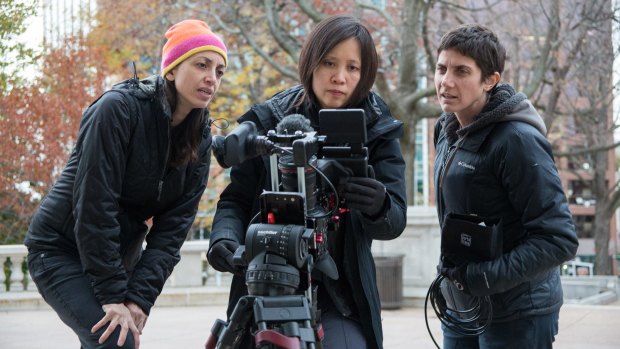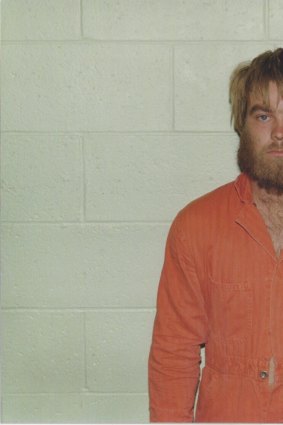This was published 9 years ago
Making a murderer and an appetite for true crime
By Michael Idato
As you read this, Steven Avery, a 53-year-old man from Manitowoc County, Wisconsin, is sitting in a cell at the Waupun Correctional Institution, a maximum security penitentiary about 110 kilometres from his hometown. His sentence: life imprisonment without the possibility of parole.
Avery's crime is murder. But the conviction comes in the wake of a perplexing and astonishing sequence of events: he was found guilty in 1985 of rape, exonerated after almost two decades in a DNA evidence-fuelled legal spectacle that left his prosecutors publicly humiliated, and then, stunningly, found guilty of a second crime, murder.
At the heart of Avery's case is a disturbing question: did the impact of his wrongful imprisonment for the first crime create the inescapable circumstances that led to the second? Adding fuel to the fire was the embarrassment of a US$36 million ($50 million) lawsuit Avery filed against the county's prosecutors, and a war of words between those who see him as an innocent man framed by the county in retribution, and those who see him as a guilty man capitalising on the miscarriage of justice of his first conviction to cast doubt upon his second.
Avery's story has been captured to stunning effect in a 10-part Netflix documentary series, Making a Murderer, which documents the story over three decades, from the rape of Penny Beerntsen in 1985, to Avery's exoneration in 2003; the murder of Teresa Halbach in 2005 and the decade since.Surfing a wave of true crime on television, the series follows similar documentaries that have captivated audiences, notably the podcast Serial, about the trial of Adnan Syed, and HBO's The Jinx, about the trial of Robert Durst, both of which took criminal cases and forensically broke them apart.

Making a Murderer creators Laura Ricciardi (left) and Moira Demos (right) with cinematographer Iris Ng.Credit: Netflix
The buzz that surrounded Making a Murderer turned it, and its producers Laura Ricciardi and Moira Demos, into one of the most talked-about topics in the living rooms of middle America. The pair will discuss the series, and its impact, next month at an event being staged in Sydney as part of the Spectrum Now festival.
True crime stories such as Serial, The Jinx and Making a Murderer, Demos says, "allow exploration of the underbelly of society and the part of society that doesn't get a lot of screen time or a lot of time in literature; I think people often are very curious about that and it opens up their eyes."
While The Jinx is about wealth – its subject, Robert Durst, was the heir to a billion-dollar fortune – the cases highlighted in Serial and Making a Murderer offer the audience protagonists who are essentially underdogs, seen in one context as victims of a system intended to overwhelm them.
"I think most people feel like underdogs in their lives," Demos says. "They feel like everything's against them, they want fairness. So this is something that people can latch on to."

The troubling case of Steven Avery, convicted of murder, features in documentary Making a Murderer.Credit: Netflix
And with the emphasis on the fine print of case detail, and lingering uncertainties of innocence or guilt, they also offer the audience a chance to play armchair detective.
In that sense, they might owe as much to Agatha Christie, Perry Mason and CSI as creative antecedents as they do to groundbreaking film crime documentaries such as 1988's The Thin Blue Line, which led to the exoneration of alleged murderer Randall Dale Adams, or 1996's Paradise Lost, about the murder trial of three teenage boys in West Memphis, Arkansas.
Ricciardi is cautious about comparisons, particularly to Making a Murderer's contemporaries. "With respect to Serial, for example, there is a narrator, [journalist] Sarah Koenig, and she's very much on her own journey to understand the investigation into who killed Hae Min Lee," she says. "Our story, in that respect couldn't be more different."
Significantly, Ricciardi and Demos point out they were never in a position to investigate the murder of Teresa Halbach, nor did they set out to. "That was never our aim," Ricciardi says. "Our goal was to document the prosecution of Steven Avery and to understand what had gone wrong in the first case. It's a very different goal in mind and different format in that sense."
The pair began filming on December 5, 2005. Since then they have worked full-time on the assembly of the documentary series. "We were really in the best position to witness the prosecution of these two individuals and to question to what extent that process was fair," Ricciardi says.
After the series was launched in the US, it drew almost universal acclaim from television critics, but created a firestorm of accusation and counter accusation in Manitowoc County where, understandably, local politics gave the documentary a unique context.
"You don't want to muddy up a perfectly good conspiracy movie with what actually happened," prosecutor Ken Kratz told US media, in a stinging rebuke to the series.
The reaction of America's news media, which is notably partisan in tone, was also mixed. Some outlets rounded on the filmmakers, backing the county's complaint that they had been unfairly portrayed. Though Ricciardi and Demos are perfectly composed during our interview, it is clear that point is a source of some frustration for them.
"I think any self-respecting journalist rather than trying to police two documentarians in our work, would actually focus their efforts on the problems in the American criminal justice system," Ricciardi says.
The filmmakers make a strong defence of the series, saying no documentary – not even one lasting 10 hour-long episodes – could have included every detail of the Avery case. "I think the question at hand is, of the list of things that we supposedly left out, do any of them have any consequence? We say no," Demos says.
Nor, she adds, was the documentary an attempt to relitigate the case on television. "That wasn't our goal in making this series; it's certainly not our goal now. We would hope that journalists look at what [Katz] is saying and check the public record and see if any of it checks out."
The impact of the series was amplified by its prominent positioning by Netflix, which has become the buzzy go-to destination for quality television. As an on-demand service, which fuels the appetite for "binge viewing", it is a rare crucible where long-form documentary can blossom against the kind of scripted programming that traditionally eats up most of the media noise.
"It can only be a good thing for storytelling and for journalism," Demos says. "Not all stories fit into a one-hour slot, or a half-hour slot, or a two-hour film and it's important that stories that don't fit into those also have an opportunity to be told.
"In that sense, what we are seeing is a new form of television journalism, a TV equivalent to the 10,000-word deep-dive piece that was the historical provenance of newspapers. "It's a great question ... to what extent is documentary filmmaking different than journalism?" Ricciardi says.
Making a Murder is not even really about Steven Avery, although his story dominates its narrative. What is on display, and what perhaps drills deep into the discomfort the law enforcement establishment has with the series, is a deeper malaise within the American justice system.
"We chose Steven because of the valuable window we thought his story could offer," Demos says. "So in a way his story wasn't of particular importance; it was what his story could show us and it's not particular to Wisconsin or Manitowoc or to Steven. These things are happening everywhere.
"I've heard from many people after they watched the series, that [they see it as] terrifying, like this could happen to anyone, and that's true and it could happen to anyone, anywhere," Demos adds. "So it's absolutely just a kernel and a crack that shows you what's really going on.
"The most frustrating thing," says Ricciardi says, "is that so many questions still remain unanswered.
"We saw it in the 1985 case; there was a wrongful conviction and a corresponding wrongful acquittal," she says. "The actual perpetrator remained on the streets to attack women. And if that's at all possible here, I would think everyone would want to know.
"In choosing Steven Avery as their subject, Ricciardi adds, it allowed them to "put a human face on a story that was for us really an exploration of the status of the American justice system. We went in because we were documentarians and we were able to do a really deep dive into the system.
"Its lasting power," Demos says, "is to provoke the kind of debate that will bring attention to what the filmmakers see as the larger, and more affecting, issue.
"The majority of viewers, not those who have a platform on television, but real viewers, what they are responding to are much deeper questions and a much deeper feeling of disquiet with what they see," she says.
Making a Murderer's Laura Ricciardi and Moira Demos will talk with Charlie Pickering for Spectrum Now on March 10. For details, see spectrumnow.com.au.
More highlights from the Spectrum Now Festival Talks in Sydney from March 1 to 16.
PILLOW TALK
Hear sparks fly between Australia's leading creative couples as they open up about their craft and collaborations.
Sunday March 6
David and Kristin Williamson, David and Lisa Campbell, Rob Carlton and Adrienne Ferreira.
Wednesday March 16
Shannon Murphy and Dan Wyllie, Richard Tognetti and Satu Vanska, Max Cullen and Margarita Georgiadis.
CULTURAL CRUSH
If you could interview anyone who would it be? Top Fairfax writers nominate their dream subject to cross-examine.
Wednesday March 9
Kate McClymont interviews Bruce Beresford; Benjamin Law interviews Leigh Sales.
Monday March 14
Richard Glover interviews Kate Mulvany; Annabel Crabb interviews Frank Moorhouse.